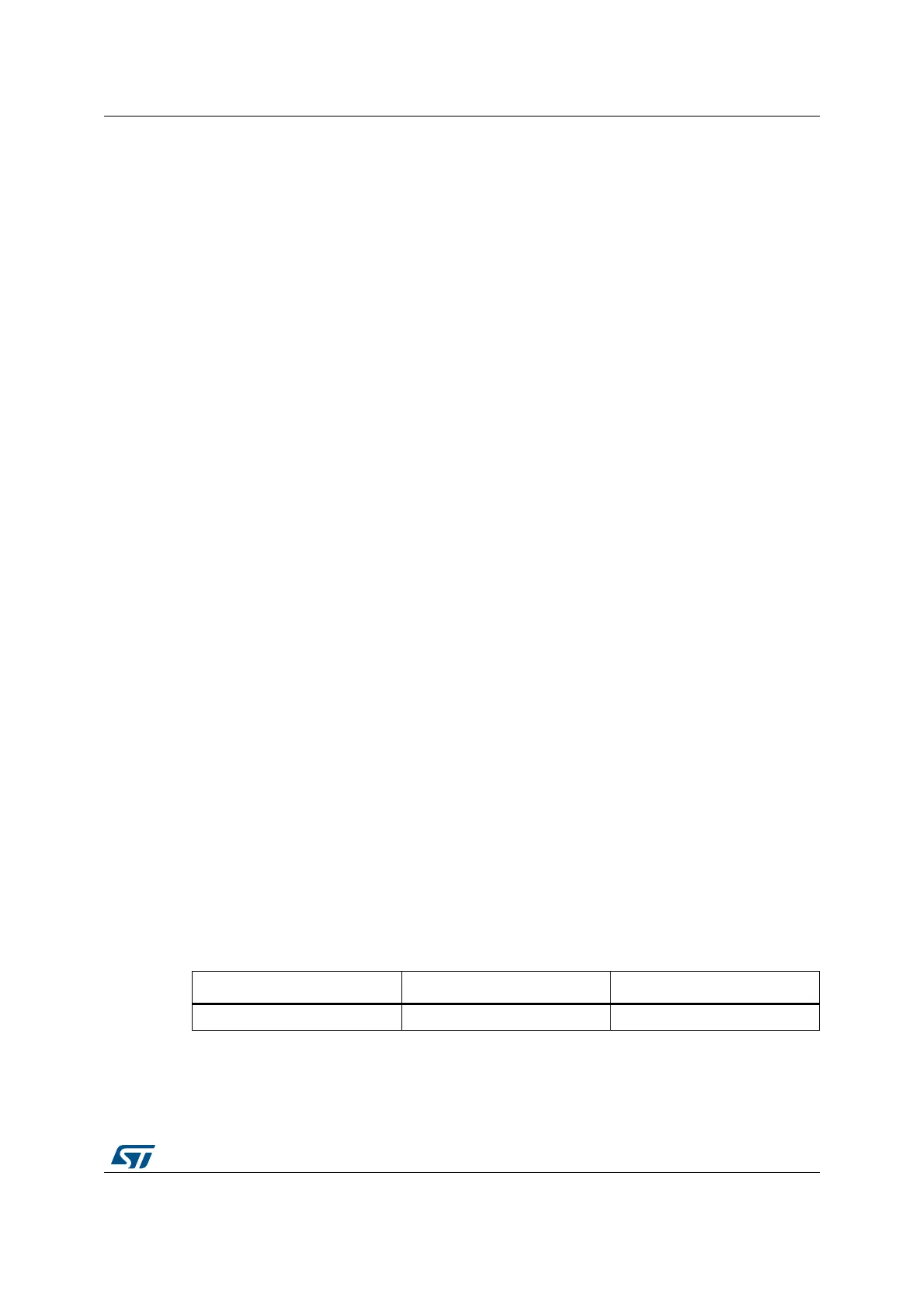RM0440 Rev 4 233/2126
RM0440 Power control (PWR)
271
(MR) supplies full power to the V
CORE
domain (core, memories and digital peripherals).
• In low-power run and low-power sleep modes, the main regulator is off and the low-
power regulator (LPR) supplies low power to the V
CORE
domain, preserving the
contents of the registers, SRAM1, SRAM2 and CCM SRAM.
• In Stop 1 modes, the main regulator is off and the low-power regulator (LPR) supplies
low power to the V
CORE
domain, preserving the contents of the registers, SRAM1,
SRAM2 and CCM SRAM.
• In Standby mode with SRAM2 content preserved (RRS bit is set in the PWR_CR3
register), the main regulator (MR) is off and the low-power regulator (LPR) provides the
supply to SRAM2 only. The core, digital peripherals (except Standby circuitry and
backup domain) SRAM1 and CCM SRAM are powered off.
• In Standby mode, both regulators are powered off. The contents of the registers,
SRAM1, SRAM2 and CCM SRAM is lost except for the Standby circuitry and the
backup domain.
• In Shutdown mode, both regulators are powered off. When exiting from Shutdown
mode, a power-on reset is generated. Consequently, the contents of the registers,
SRAM1, SRAM2 and CCM SRAM is lost, except for the backup domain.
6.1.5 Dynamic voltage scaling management
The dynamic voltage scaling is a power management technique which consists in
increasing or decreasing the voltage used for the digital peripherals (V
CORE
), according to
the application performance and power consumption needs.
Dynamic voltage scaling to increase V
CORE
is known as overvolting. It allows to improve the
device performance.
Dynamic voltage scaling to decrease V
CORE
is known as undervolting. It is performed to
save power, particularly in laptop and other mobile devices where the energy comes from a
battery and is thus limited.
• Range 1: High-performance range.
In range 1, the main regulator operates in two modes following the R1MODE bit in the
PWR_CR5 register:
• Main regulator range 1 normal mode: provides a typical output voltage at 1.2 V. It is
used when the system clock frequency is up to 150 MHz. The Flash access time for
read access is minimum, write and erase operations are possible.
• Main regulator range 1 boost mode: provides a typical output voltage at 1.28 V. It is
used when the system clock frequency is up to 170 MHz. The Flash access time for
read access is minimum, write and erase operations are possible. To optimize the
power consumption it is recommended to select the range1 boost mode when the
system clock frequency is greater than 150 MHz. See Table 38.
• Range 2: Low-power range.
Table 38. Range 1 boost mode configuration
System frequency SYSCLK ≤ 150 MHz SYSCLK ≤ 170 MHz
R1MODE bit configuration 1 0
